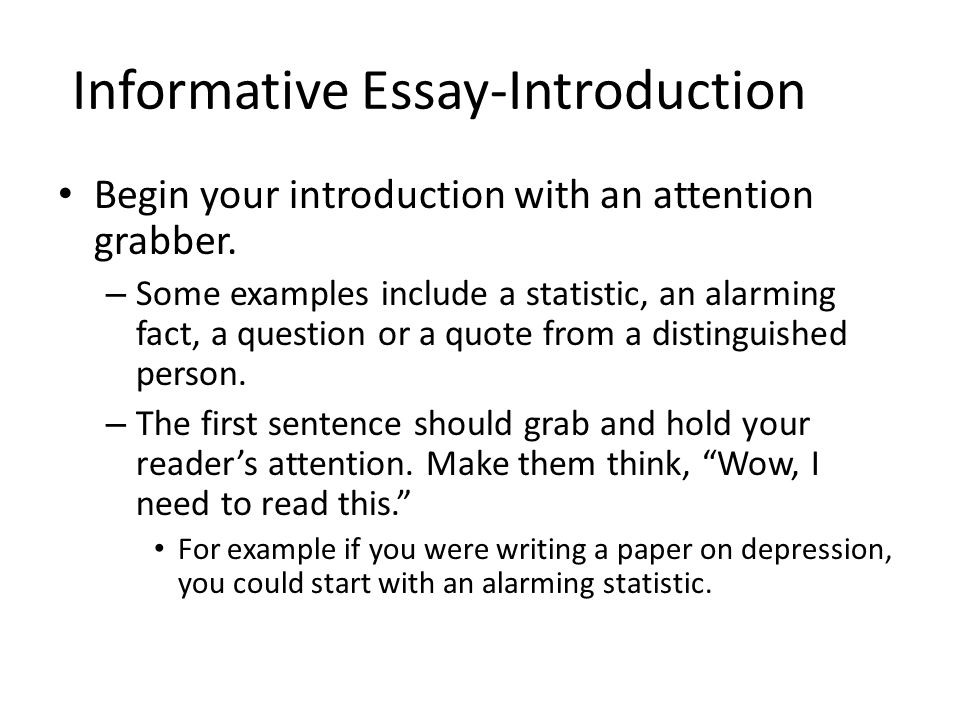How To Write The Perfect Body Paragraph: The Quick And Easy Way
If an essay were considered in terms of a sandwich, the top and bottom pieces of bread would be the introduction and conclusion. The actual contents of the sandwich—meat, cheese, lettuce, tomato, etc.—would be the body paragraphs. Just like you would not want your sandwich filled with cheap meat and flavorless products, a teacher does not want paragraphs lacking in substance. Writing a perfect paragraph every time, for any subject, can be quick and easy if you can fill in five predetermined sentences with your own information. Before we can move ahead to make the perfect paragraph, we first have to come up with a main idea to link this paragraph to. A main idea—also known as a controlling idea, thesis or enthymeme—simply tells the reader what your main argument is. Let’s say my teacher wanted me to write about a food that I liked. My main idea/thesis could be: “Peanut butter and jelly sandwiches are the best.” (Yes, there is a theme about sandwiches developing here).
This has been created with Essay Writers!

The subject is “peanut butter and jelly sandwiches,” and the argument/opinion is “they are the best.” Now that the thesis is established, the perfect paragraph will make much more sense as it is composed. A basic paragraph has five standard components/sentences. A topic sentence states what the paragraph will be about. This prepares your reader for what is to come. The concrete detail is an example, quote or paraphrase that supports your point. This information can be from personal experience, a book, or another source. Commentary and analysis explain the importance of the concrete detail. This information helps prove and relate back to your thesis. This is usually when someone would say, “So what? ” Tell the reader why this information important? 2) Provide a smooth transition into next paragraph. Now, let’s see these parts put into action. Remember, the thesis for the paper is “Peanut butter and jelly sandwiches are the best.” My topic sentence will be: One reason peanut butter and jelly sandwiches are the best is because they are easy to make. Next, I need an example to support my topic sentence and thesis: A peanut butter and jelly sandwich only requires bread, peanut butter, and jelly.
Now, commentary and analysis are needed: Virtually any kind of bread can be used that is on hand, and the same is true for the peanut butter and jelly. With a quick smear of peanut butter and jelly on bread, the sandwich is complete. The only thing left is the concluding sentence: The ease with which a peanut butter and jelly sandwich can be made is not the only reason peanut butter and jelly sandwiches are the best. Now the paragraph is complete. One reason peanut butter and jelly sandwiches are the best is because they are easy to make. A peanut butter and jelly sandwich only requires bread, peanut butter, and jelly. Virtually any kind of bread can be used that is on hand, and the same is true for the peanut butter and jelly. With a quick smear of peanut butter and jelly on bread, the sandwich is complete.
The ease with which a peanut butter and jelly sandwich can be made is not the only reason peanut butter and jelly sandwiches are the best. I have used this same formula, also called the chunk method, starting with elementary students. If composing a whole paragraph about peanut butter and jelly sandwiches was this easy, certainly you can write a perfect paragraph about anything. The best part is this paragraph outline can effortlessly be expanded to include more examples and commentary for papers that require more depth. Stephanie Bradberry is first and foremost an educator and life-long learner. Her present work is as an herbalist, naturopath, and energy healer. She spent over a decade as a professor of English, Literature, Business and Education and high school English teacher. Thanks ColibriPhoto. I will have some hubs coming just for you about easy introductions and conclusions. I can't say how soon though. Nice article Stephanie,You defined it very well. I find the closing paragraph to be the hardest, the opening paragraph second. The body is the easy part, like making a peanut butter and jelly sandwich.
Transitional phrases are useful for showing the reader where one section ends and another begins. click for more may be helpful to see them as the written equivalent of the kinds of spoken cues used in formal speeches that signal the end of one set of ideas and the beginning of another. In essence, they lead the reader from one section of the paragraph of another. Hopefully this example not only provides another example of an effective body paragraph but also illustrates how transitional phrases can be used to distinguish between them. Although the conclusion paragraph comes at the end of your essay it should not be seen as an afterthought. As the final paragraph is represents your last chance to make your case and, as such, should follow an extremely rigid format. One way to think of the conclusion is, paradoxically, as a second introduction because it does in fact contain many of the same features. While it does not need to be too long - four well-crafted sentence should be enough - it can make or break and essay.